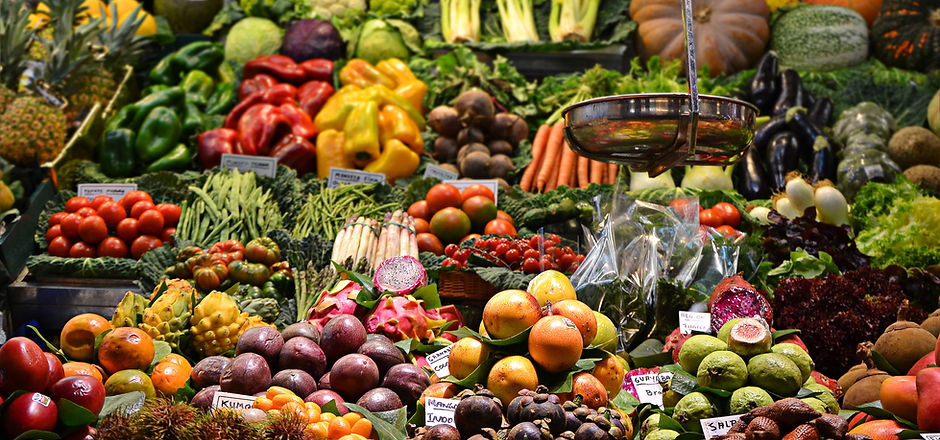Award Winning Programs:
The Golden Trowel Award, presented to Veterans Park


2022 Growth Award Recipient

2022 Outstanding Achievement Award "Environmental Efforts"
Best Community Garden Program
THE FOOD PYRAMID
The food pyramid demonstrates healthy portions of food.
The food pyramid has been used for years to help people maintain a healthy diet, and creating healthy eating habits.
The pyramid is separated into 5 main categories: whole grain, fruits and vegetables, protein, dairy, and fats and sugar. The bottom of the pyramid is the food you should consume the most, and the top is what you should eat less of.

WHOLE GRAINS
Whole grain includes bread, cereal, rice, potatoes, pasta, and other grains. Whole grains should be consumed the most, with 2-4 servings a day.
Whole grains are very healthy and good for the body because they provide fiber, healthy fats, carbohydrates, and proteins.
However, many grains have been stripped of their valuable nutrients to be better tasting. This results in refined grains, such as white rice and noodles. It's highly recommended to choose whole grain products to maximize the health benefits.


FRUITS AND VEGETABLES
Fruits and vegetables are an important part of a healthy diet, and it’s essential that you eat a variety of them to get all the nutrients that you need. Make sure that half of your plate fruit and vegetables to get the right serving. Drinking 100% fruit or vegetable juice is adequate.
Benefits of fruits and vegetables:
Fruits and veggies provide nutrients such as dietary fiber, potassium, vitamin A, vitamin E, vitamin C, and folate (folic acid).
Eating fruits can reduce the risk of chronic diseases such as stroke, heart attack, heart disease, cancer, obesity, high blood pressure, kidney stones, and bone loss.
Fruits and vegetables are lower in calories so they’re good for weight loss and dieting.
It’s recommended to eat more vegetables than fruit, with the average adult woman needing 2 cups of vegetables and a man needing 2.5 cups of vegetables
The subgroups of vegetables include:
Dark green vegetables (broccoli, romaine lettuce, spinach, kale)
Red and Orange vegetables (tomatoes, carrots, pumpkin, sweet potatoes, squash)
Beans and peas (black beans, soybeans, tofu, lentils, green peas, and garbanzo beans)
Starchy vegetables (corn, potatoes, green peas, green lima beans)
Other veggies (zucchini, green beans, bell peppers, Brussel sprouts, asparagus, avocado)
Allium are bulb shaped that grow underground (onions, celery, leeks, garlic)
DAIRY
The dairy group includes liquids and food made from milk. Examples are yogurt, cheese, butter, coffee cream, crème cheese, eggs, etc.
Dairy has nutrients such as calcium, potassium, vitamin D, and protein.
“Calcium is helpful for building teeth and bones and in maintaining bone mass. Potassium helps to sustain a healthy blood pressure. Vitamin D plays an important role in maintaining the right levels of phosphorus and calcium, to build better bone mass and density.”
Processed foods such as butter, and cream cheese, have little calcium content. Watch the type of dairy you consume, and limit it to 3 servings per day.

PROTEINS
Protein is an essential nutrient that helps the body with it's everyday functions. It provides the body with energy. Protein includes meat, and seafood.
There is also plant protein for vegans and vegetarians including tofu, beans, nuts, and seeds.
Protein sources include:
Ground meats - beef, pork, lamb
Poultry - chicken, duck, goose, turkey
Eggs from ducks and chickens
Seafood - tuna, trout, salmon, herring, catfish
Shellfish - shrimp, squid, clams, crab, crayfish, lobster, mussels
Beans and peas - black beans, falafel, lentils, pinto beans, lima beans, chickpeas
Nuts and seeds - walnuts, sunflower seeds, peanuts, almonds, cashews

FAT, OILS, SUGAR, & SWEETS
Fat, oil, sugar, and sweets should be consumed sparingly. Eat them with caution! Consuming too many fats and sweets can cause weight gain, diabetes, obesity, cardiovascular diseases, and impaired heart health.
Oils provide essential nutrients. Oils come from plants and fish. It’s in the form of vegetable oils.
Some foods are high in oil, such as avocados, olives, and nuts.
Oils contain essential fatty acids, and vitamin E.

